For this molding and casting homework, I created a set of replica that retained a high level of details of my index and middle finger.
Molding& Casting
The mold was made with a alginate to water volume ratio close to 1:1. Since the volume was measured crudely by eyeballing the mark on the measuring cup, the mixture was a little to thin at exact 1:1 water to powder. I added another spoon of power to bring it to the right consistency. After submerging my fingers in the mixture for 5 minutes, the mold solidified. I can feel it tightening around my fingers as the material hardened. The plaster mixture was 2 part power and 1 part water by volume. Again the mixture was too thin so I added two more spoons of powder. The mixture was poured into the finger holes in the mold. Before it begin to harden, two screws suspended by a popsicle stick and tapes were placed at the center of each finger. They are half-submerged, head first. The entire setup was transferred indoor and left overnight.
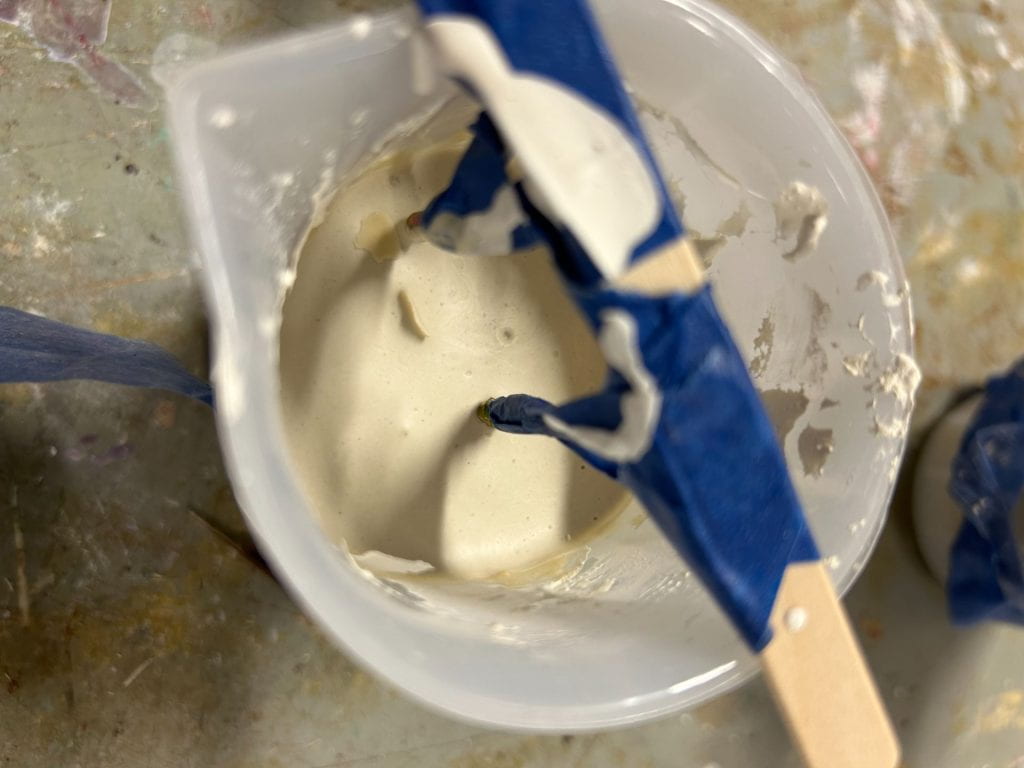
Post-Porecessing
When I demold the fingers the next they, they came out without much difficulty. There was no visible defects and all the details (nails, skin textures, wrinkles) were captured vividly. The only problem was that I poured too much plaster into the mold so instead of a clean edge, there were irregular blobs of plaster at the base of the fingers.
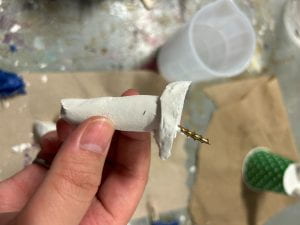
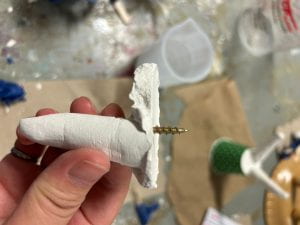
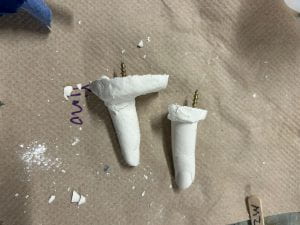
To reduce the size of the base, I first used a groove plier to breakoff larger chunks on the perimeter. Once I got closer to the finger, I switched to a smaller wire cutter to remove as much material as possible without cracking the paster. Lastly, I lightly sanded the surface with 220 grit sand paper to remove any sharp edges. The material is brittle so not a lot of force was required. There are still some extra plaster around the base but I didn’t remove them to avoid accidentally damaging the fingers, especially near where the screws are located.
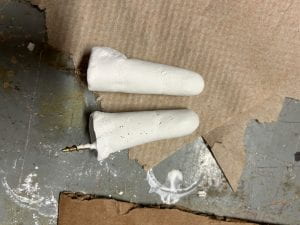
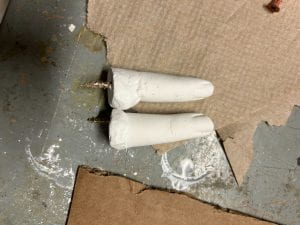
I spray painted the fingers with metallic silver paint and the texture turned out great. The paint didn’t mask the skin textures which is desirable.

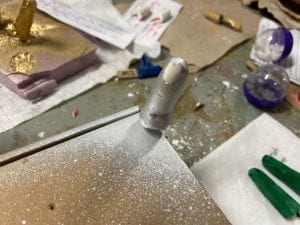
Afterwards, I cleaned the area and vacuumed all the plaster debris on the surfaces.

Cleaned measuring cup
Cost Analysis
| Cost Type | Cost | Price | Source | Quantity | Total | |
| Materials | Skullduggery Perfect Molding Material | $10.99/ 1.5 lbs | HobbyLobby | 1/10 | 1.099 | |
| Dap® Plaster of Paris | $7.99/ 4 lbs | Michaels | 2/50 | 0.3196 | ||
| #8 x 2 in. wood screw | $8.46/ 75 pieces | HomeDepot | 2 | 0.2256 | ||
| Popsicle stick | $3/150 pieces | Target | 1/150 | 0.02 | ||
| 12 oz. Gloss General Purpose Spray Paint | $6.48/ can | HomeDepot | 1/20 | 0.324 | ||
| Labor | Mold Technician | $20 /hr | ZipRecruiter | 0.75 hr | 15 | |
|
|
Handcraft Product Finisher & Artistic Design | $27 /hr | ZipRecruiter | 1 hr | 27 | |
| Sum | 43.9882 |
